LADYHAWKE: A Better '80s Fantasy Than THE PRINCESS BRIDE
This may seem like an inconceivable statement, but hear me out.
Before you throw me to the shrieking eels, please understand — I don’t hate the beloved 1987 fantasy classic known as THE PRINCESS BRIDE. It has many fine qualities and I have fond memories of watching it through my high school and college years. But the last time I watched it, it troubled me enough to drop a few notches as a treasured favorite fantasy film.
I was introducing it to my daughter, who was maybe 7 or 8 at the time, eager to educate her on one of many staples of pop culture and rites of passage for “classic cinema.” Early on, we had tears and screaming at the R.O.U.S (Rodent Of Unusual Size) in the deadly swamp attacking Westley and biting his shoulder. Woops! A bit too soon, Dad? Did I miscalculate the age-appropriateness here and generate some kindertrauma and nightmare fuel for my precious child? She calmed down before too long and got over it quickly, but I began wondering, what else is in this movie that I forgot about?
One thing I forgot about was just how violent the climactic “You killed my father…prepare to die” showdown is between Inigo Montoya and Count Rugen. I forgot how much blood and slicing & stabbing there was, and how the final “you son-of-a-bitch” act of vicious revenge actually plays out on screen. After so much build-up and repetition of that iconic line that everyone loves so much, Inigo accomplishes his quest and avenges his father’s death, in full close-up, full of rage and a sharp jab with his sword. This famous act of revenge did not give me the same sense of satisfaction and entertainment as it once did. Sitting in the shadow of my young impressionable offspring, it disturbed me in a way I had never really considered. It simply felt out of place alongside the whimsy and light-hearted comedic tone that led up to it.
Inigo’s actor Mandy Patinkin has come to an epiphany about the scene himself, as he has revealed in several interviews since then, speaking about how his own attitude towards that “You killed my father” line has changed over 30 years later. While making the movie, his own rage at his own father’s death from cancer was channeled into the fuel for revenge that drove his character. But it’s a different line from the end of the film that inspires him today.
From NPR: Many years later, he heard some of Inigo's last words in the film again — "I have been in the revenge business so long, now that's over, I do not know what to do with the rest of my life" — and he heard them quite differently. "As a young man," Patinkin says, "I think I was in a bit of the revenge business for too many years of my life. And, you know, somewhere in the past 10 years, I stopped being so angry and started being a little more grateful, literally for the sunrise and the sunsets and my kids and my family and the gifts I've been given. And then I saw that movie, the end of that movie. I didn't see the whole thing, I just caught the end of it, and I heard that line. And as a young man I remember saying it, I went back and looked at my script to see what notes I'd put in, and I really didn't have any notes for that line. I just said it, and I didn't realize what I was saying. And then I heard it as a grown up or whatever you want to call me, and it meant everything to me today.”
I too am grateful this reflection came about for Patinkin as he has grown and matured. But the violent revenge in the film itself remains frozen in celluloid, and more people still re-watch it today compared to these various interviews speaking of this redemptive real-life trajectory for one of its actors.
Equally eye-opening to me watching PRINCESS BRIDE for the umpteenth time was a fresh look at the Bride herself, Princess Buttercup, who I figured my daughter would appreciate, being a fan of Disney princesses like Rapunzel, Belle, and her namesake Ariel. But all things considered, Robin Wright’s iconic youth and beauty doesn’t make up for the vapidness of her damsel-in-distress character, who doesn’t really do much to defend herself or have much agency in the story.
Meanwhile, while my appreciation for one beloved ‘80s fantasy classic has waned a bit, a blooming in the opposite direction, like a cup of sweet wine, has aged finer in my admiration for another: Richard Donner’s 1985 film LADYHAWKE, an underrated gem that deserves a closer look and more attention. In fact, I believe it’s the greatest medieval fairy tale fantasy of the 1980s.
I was first introduced to this movie around 1988 or so, when I was 13, watching it at the house of my good friend Joy. One of the foundations of our friendship was that she was just as obsessed with fantasy films (particularly stuff like THE NEVERENDING STORY & THE DARK CRYSTAL) as I was...but LADYHAWKE was one I had never heard of before. Joy spoke of it like it was a sacred treasure, and while it didn't have any animatronic Gmorks, Falkors or Skekses to thrill my creature-loving geekdom, I was fascinated by the idea behind the story...the whole concept of the wolf-by-night and the hawk-by-day who could never be together as humans.
I watched LADYHAWKE again while in college, most likely in the same breath as another PRINCESS BRIDE re-watch. With older eyes I had a hard time getting past the cheesy mis-matched Alan Parsons disco-synth soundtrack in those first few sequences. I shrugged it off as a product of its time that hadn't aged all that well, a what-were-they-thinking cinematic blunder where the choice of music completely ruined what could have been an otherwise much better movie.
But something about that story brought me back to it in more recent years, and I learned to appreciate it anew, even beyond the nostalgia of my introduction to it. The characters are compelling and mystifying to look at, and Matthew Broderick's performance as Phillipe Gaston “The Mouse” is the glue that holds it all together. His dialogue with God is inspired and profound (“I know I promised, Lord, never again. But I also know that you know what a weak-willed person I am.”) and fits well into to an incredibly well-written screenplay, giving his character much to play with. Other than Ferris Bueller, it's my favorite role of his in any movie.
It is also beautifully filmed, primarily on real locations and ancient castles in Italy, with backdrops and colorful skies & sunsets that are gorgeous to behold, especially on Blu-Ray. Now granted, some of the costumes feel a bit more like Renaissance Faire or Medieval Times cosplay than authentic medieval garb, but the stone walls of real castles and grittiness of the walls and cathedral pillars balance this campiness with their splendor, brought to life by Vittaro “APOCALYPSE NOW” Sittaro’s cinematography. The sets in PRINCESS BRIDE (other than the cliffs and hills) feel like movie sets, compared to the lush scenery of LADYHAWKE, a fresh story told in an ancient, lived-in world. Looking closer at the camera work, editing, screen direction and visual inventiveness of action scenes in LADYHAWKE, there is also much more variety and surprise in how the sequences play out, from chases in the woods to sword fights. The scenes and cuts fit together with impressive integrity and beauty. If you pay close attention to how the film is crafted, it’s brilliant and extremely well done.
But what about that musical score?
You need to remember the soundtrack was a collaboration between prog rock composers Andrew Powell and Alan Parsons, brought in simply as a result of Richard Donner listening to The Alan Parsons Project while scouting locations. It was also the ‘80s new wave Mtv era, and there was a trend at the time of using synth-heavy scores for films as a hip alternative to lush orchestral scores of the past. LADYHAWKE admittedly starts off on the wrong foot with the opening credit sequence, where the music truly does not fit or give an appropriate overture to its classical medieval sword & sorcery setting. It’s also incredibly jarring in a few sequences from the first 30 minutes or so of the film, not meshing well with Navarre’s horse riding shots or various battle sequences. But aside from these moments, there is an exquisite orchestral score driven by Powell that drives the majority of the movie. The soundtrack to most of the sequences meshes just fine and underscores the emotional drama and tragedy — in particular the dual transformation sequence where Navarre and Isabeau almost touch each other as humans…their personal twilight between wolf and hawk. The music combined with symbolic and beautiful lighting effects, subtle close-ups, and cutaways to Philippe’s tearful observation from afar make this incredible moment a true visual highlight of a moment only referred to verbally thus far — always together, eternally apart.
The theme of “always together, eternally apart” in LADYHAWKE has an additional timeless resonance to particular injustices of today, when you consider the role played by the church in the film. The Bishop is portrayed as a ruthless dictator in a kingdom where church and state are not separated but intertwined. Much like THE HUNCHBACK OF NOTRE DAME, armed captains and soldiers are ordered by the church to prosecute and execute the lawless ruffians and thieves of society. Although the Bishop may boast “I believe in miracles…it’s part of my job,” his religion is one of power and control (and a little lust) more than Christ-like compassion or servant leadership. Though not a direct allegory by any means, the historical abuse of power by the church has much blood on its hands in the ways it’s mistreated the LGBTQ community, for example — suggesting their orientation or supposed “lifestyle” has no place in a “proper” church community. The curse placed on Navarre and Isabeau is partly a condemnation of their love for each other, but also of their personhood, one where they are not free to live out their true natures as human beings. The impact on queer individuals and couples condemned by church leaders who cling to power and control is a parallel that can be drawn, if not in a literal sense in terms of the story, but in an emotional sense. It also brings additional resonance to the scene where Isabeau, stoically and silently, confronts the Bishop and drops her discarded hawk hood and leash at his feet, standing up for her personhood, her humanity, and her dignity. (Luckily, there are a growing number of affirming and welcoming churches today who have moved beyond medieval times and actually recognize the humanity and dignity in all people.)
The character of Isabeau herself is also a pillar of strength and integrity compared to the helpless Princess Buttercup. In the excellent article Is Ladyhawke the Best Fairy Tale of Them All? at Tor.com by Leah Schnelbach, she remarks…
“One of the big debates people have had over the last year is what constitutes a “strong female character.” Is she a Robert E. Howard-style lady warrior? A Ripley/Sarah Connor-style hard ass? A Michelle Yeoh-style ass-kicker? Back in the 80s, this debate hadn’t really caught fire yet. The women in most 80s fantasies were either beautiful but vapid (Princess Lily, Buttercup) or warriors (Teela, Sorsha, Valeria). Isabeau is revolutionary to me because she is neither of these. She is a believable woman of her era, with a hint of an unhappy childhood, who is put in an extraordinary situation and rises to it.”
In a recent online polling bracket for ‘80s COMEDIES started by some friends of mine on Facebook called Bracket of Champions, THE PRINCESS BRIDE won the most votes against BACK TO THE FUTURE by a thin margin (51.99% to 48.01%). I was not impressed, and did not vote this way for the winning pick. I mean, come on…BACK TO THE FUTURE is a perfect movie. But such is life. It was another pinch of salt in my feeling that PRINCESS BRIDE, while a very good movie, well cast and funny with memorable lines and iconic scenes, has simply become overrated over time, and the popular religiosity over its untouchable greatness has become tiresome, at least for me.
Call me a heretic if you like, but I will die on the hill that LADYHAWKE, while certainly not perfect, is the superior fantasy film in terms of its screenplay, dialogue, scenery, characters and true depth to its story. The stakes feel higher and I’m brought to the edge of my seat caring more for the fate of Navarre and Isabeau than most other movie couples I can think of — even Westley and Buttercup. It also doesn’t have Fred Savage whining through the whole thing.
Once again, Tor.com’s Schnelbach brings to light another reason why LADYHAWKE is a deep and refreshing subversion of familiar fairy tale tropes….
Wait, Who’s the Hero Again?
Everyone saves everyone else. Navarre saves Phillipe in the beginning, and murders the Bishop to save Isabeau from his final attack. But Isabeau grits her teeth and remains conscious during an arrow extraction, and saves Navarre twice while he’s in his wolf form (plus attacking people on his behalf while she’s a hawk). Phillipe dives right into an icy lake to save Wolf-Navarre from drowning, and (mostly) willingly sneaks back into the castle of Aguila to help his friends, even though it’s certain death if he’s caught. And Imperius dedicates years of his life to studying the curse, nurses Isabeau after her wound, and goes up against a Satanic Bishop. So in the end Ladyhawke isn’t a typical fairy tale tweak, or a coming-of-age film about a young thief who finds a higher purpose, or a tale of a dashing knight who rescues his ladylove, or a tale of good vanquishing a satanic evil—it’s all of those things. And I love it.”
If you, dear reader, love LADYHAWKE as much as I do, I fully expect to meet you at the Pearly Gates, even if I have to pick the lock.

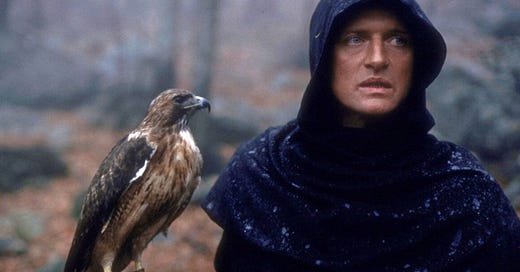


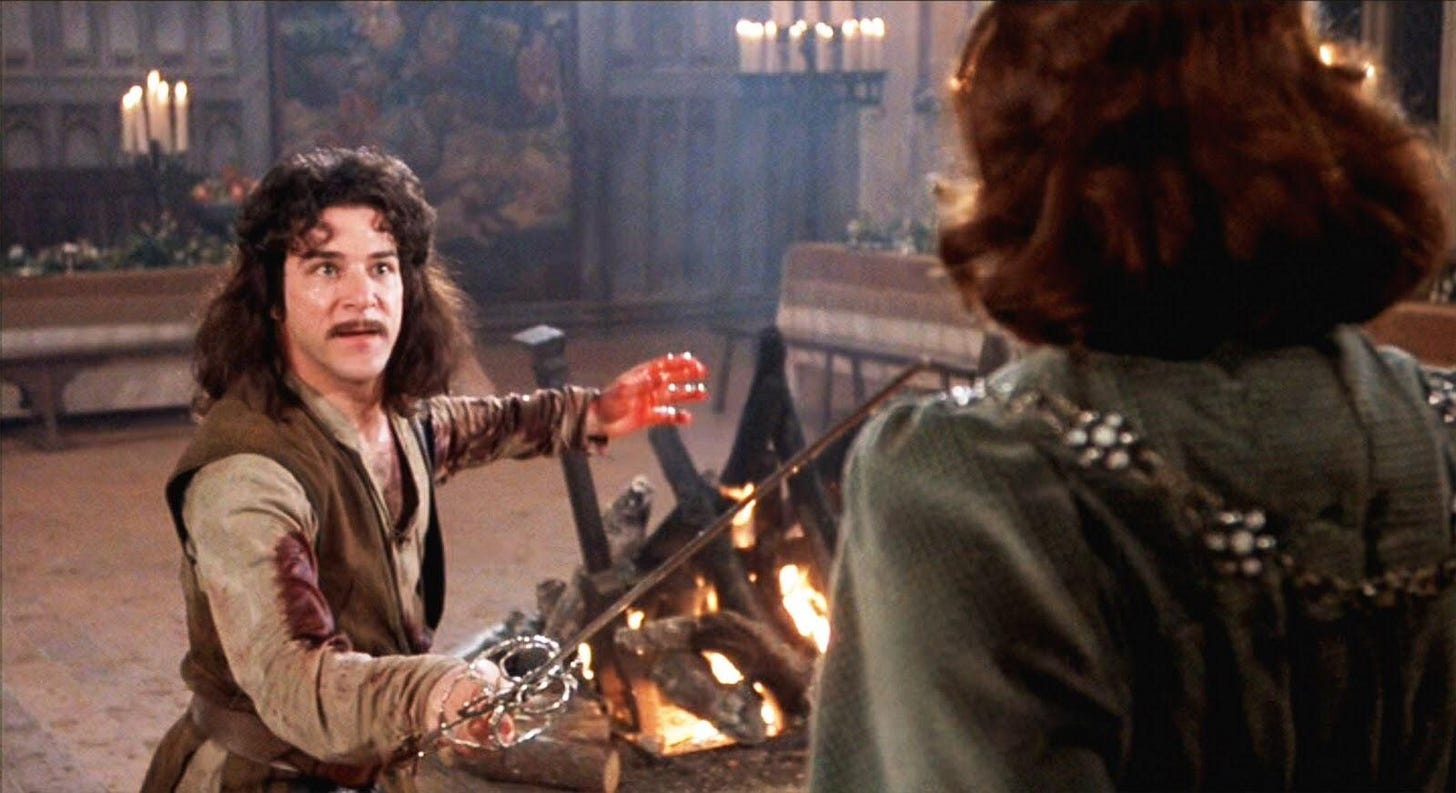
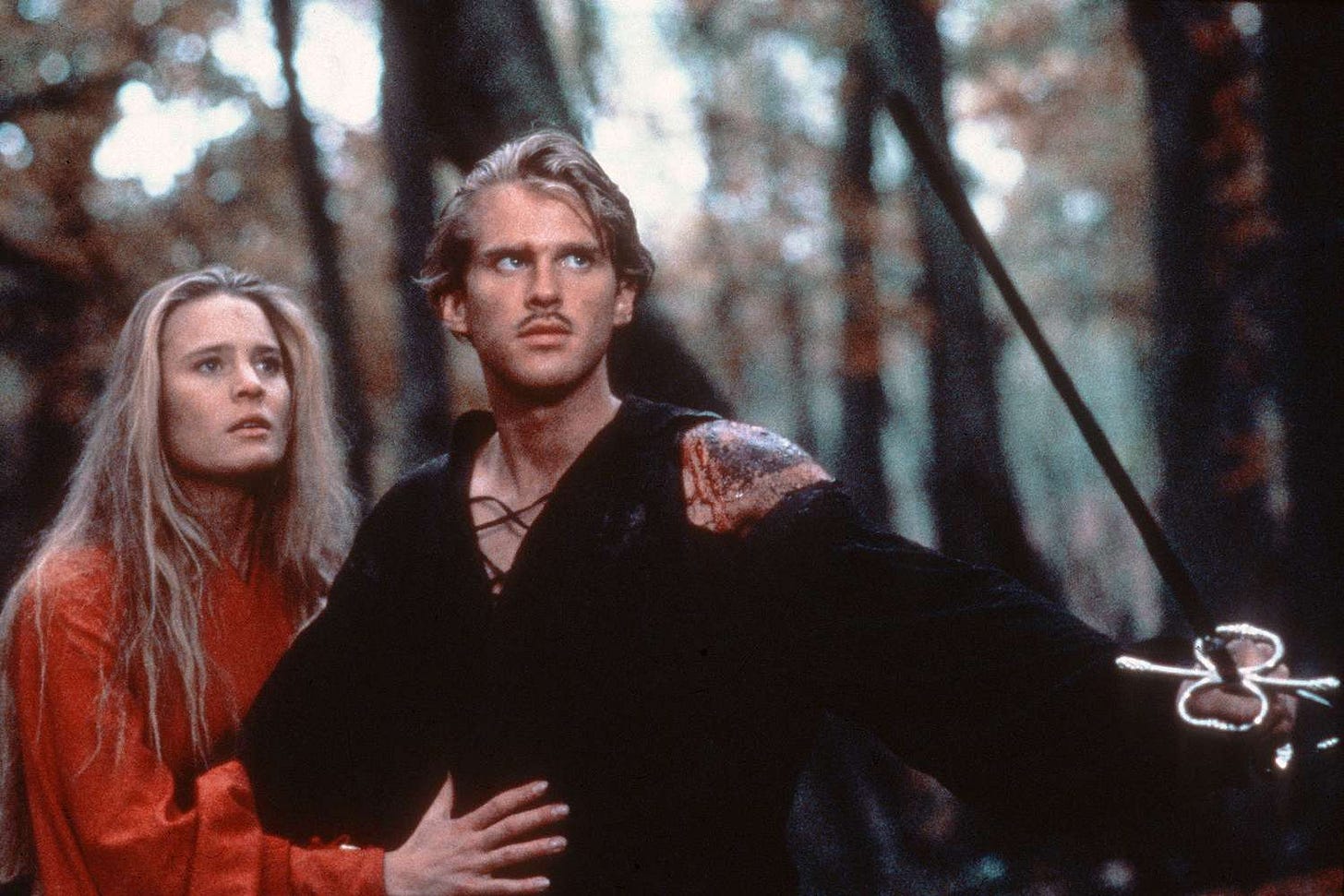

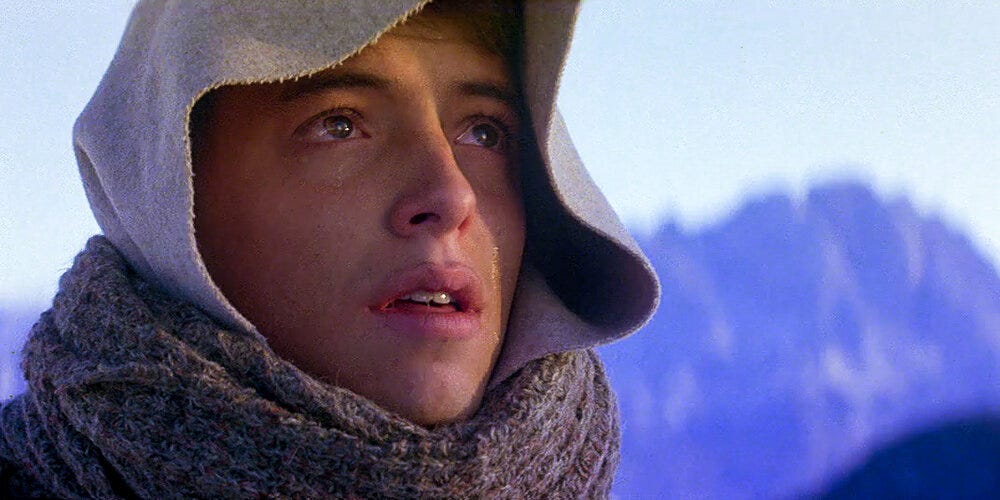

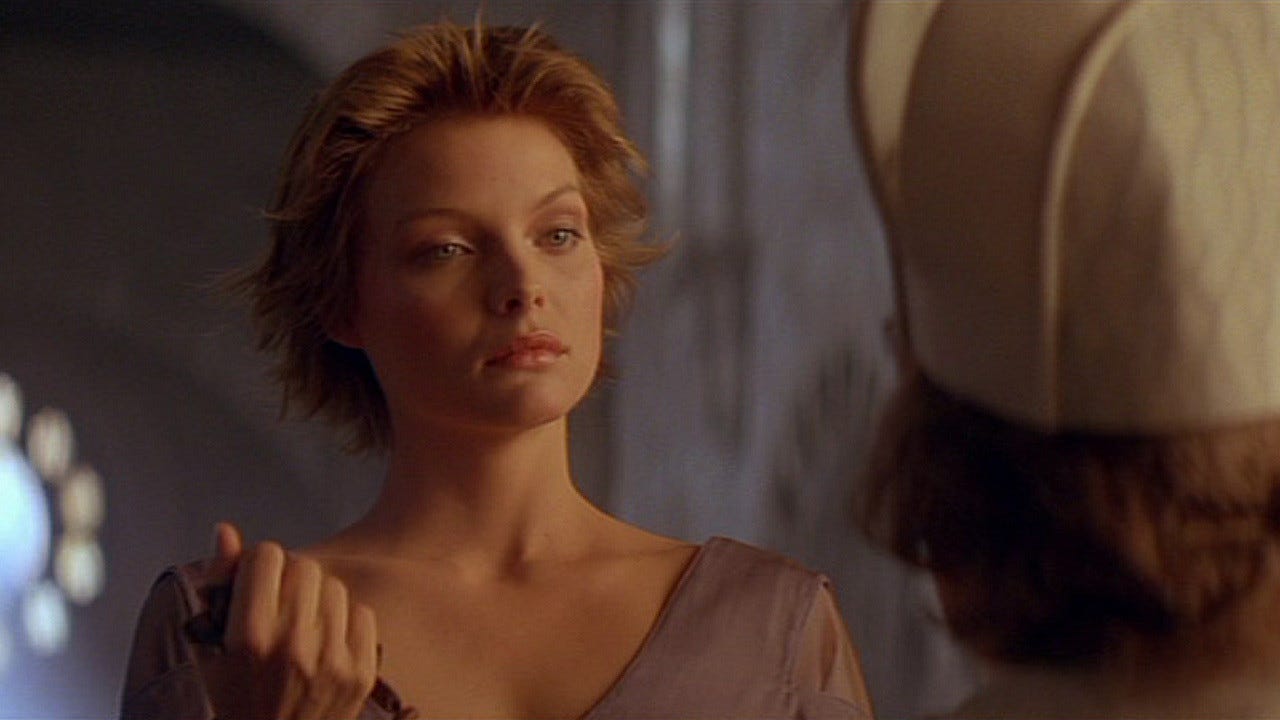
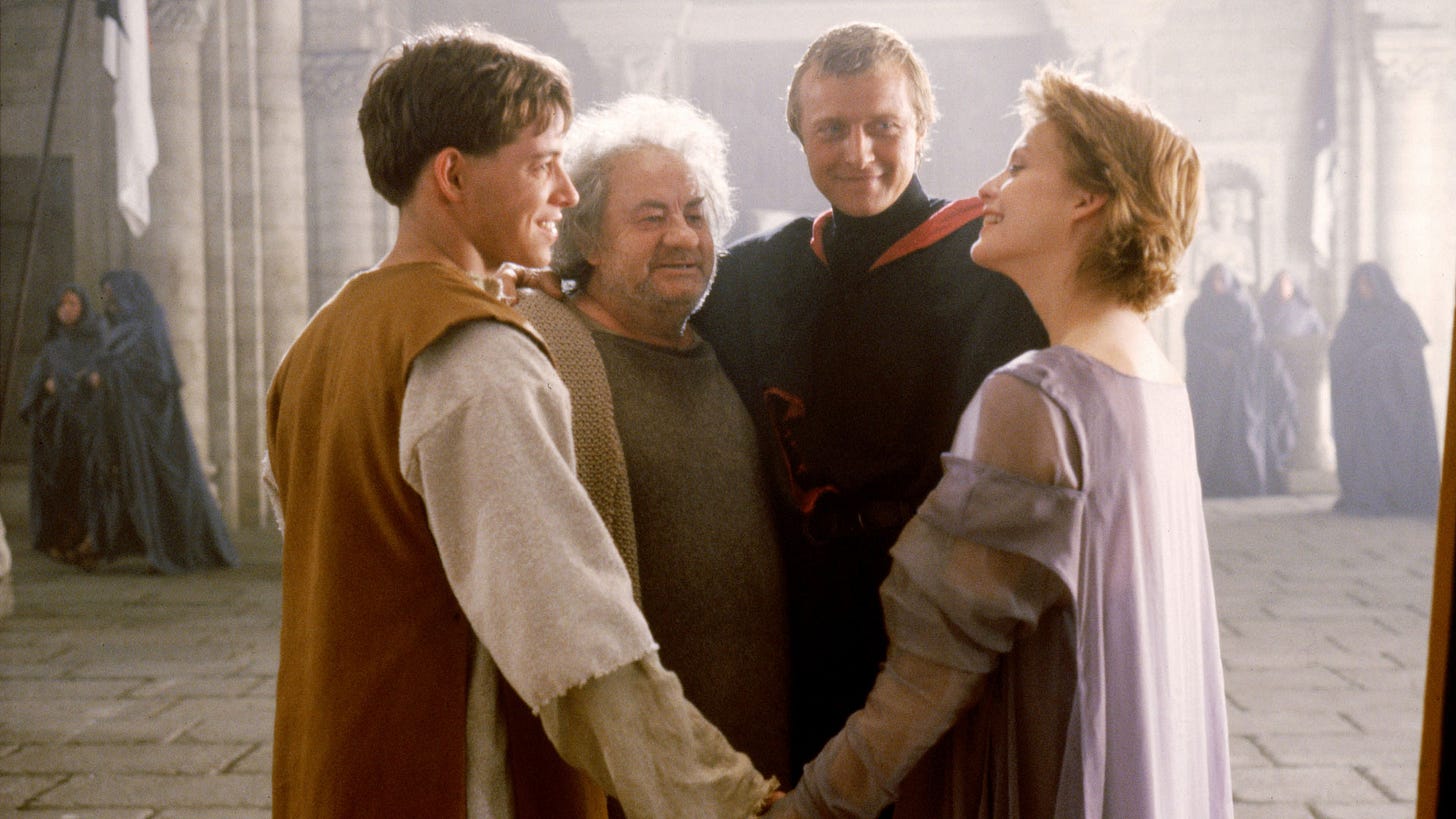
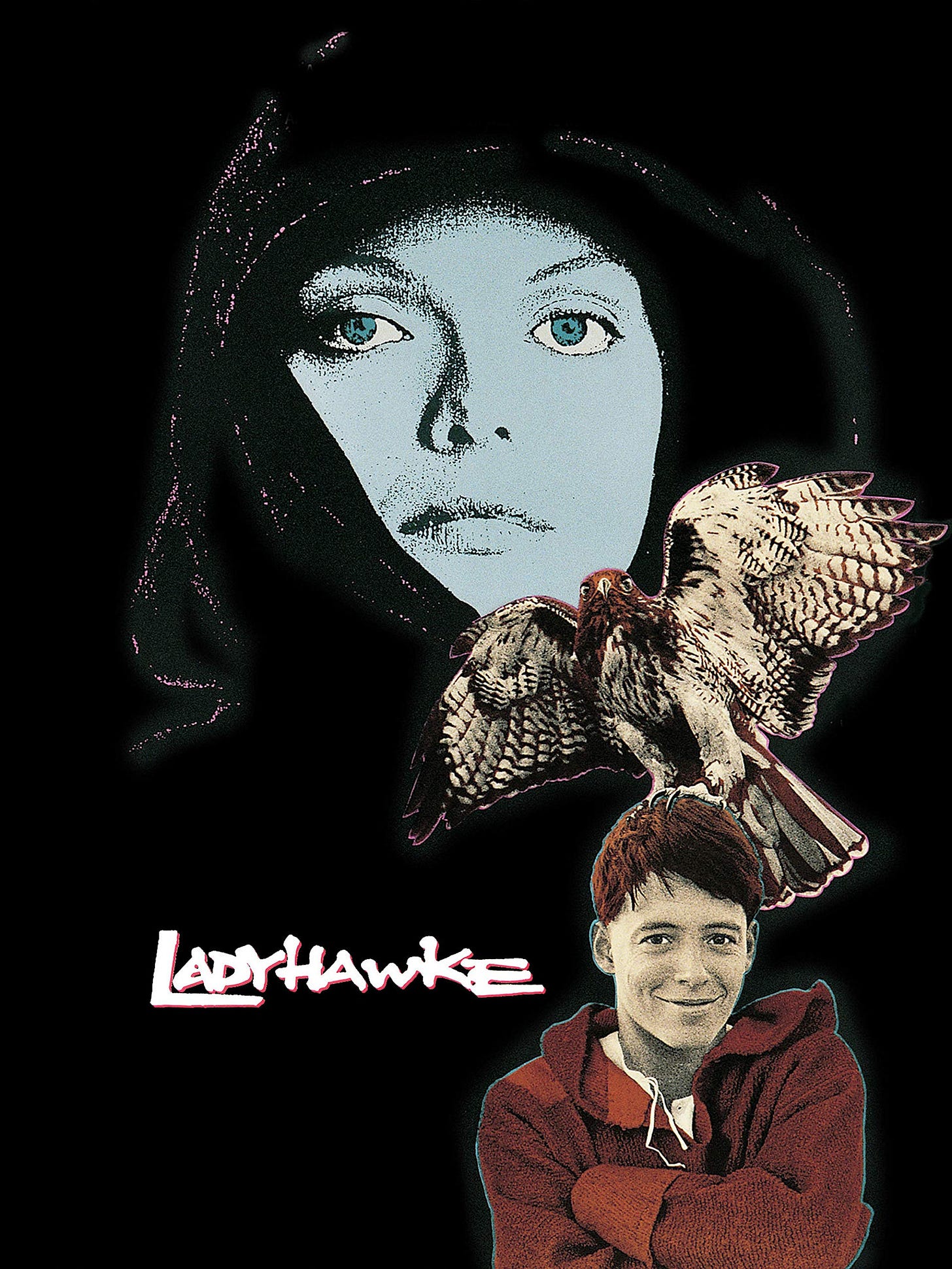
I use this movie in conjunction with "Gawain and the Green Knight" in my Heroes and Villains high school class, and even though the techno score of the beginning is a bit grating at times, the movie is one of my favorites...ever. The 80s had a wonderful group of fantasy films, and Ladyhawke is absolutely one of the best. Thank you for remembering this film for the masterpiece it is.
Thank you so much for this. I too have adored the film Ladyhawk for decades, and I have taken the name as my own nom de plume in online communications for a long time. Apart from the incredibly romantic story line, which just melts me every time I watch it, it was the first time I ever saw the Friesian breed of horse, which has captivated me ever since. The man, the woman, the horse , the hawk -- what an unforgettably romantic story.